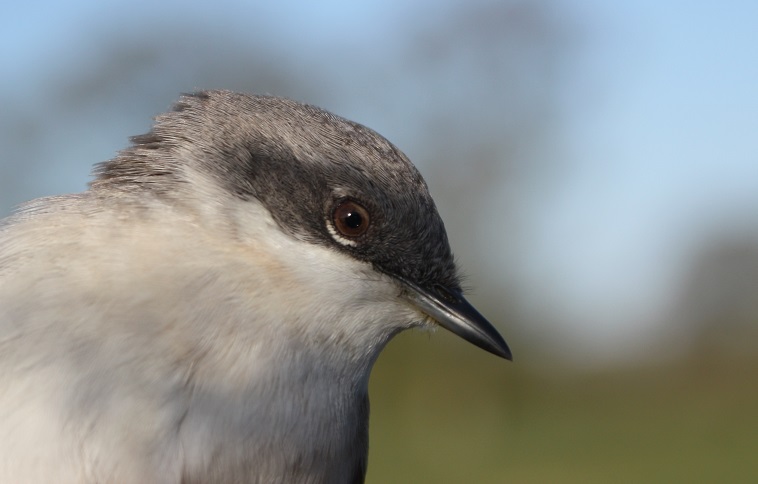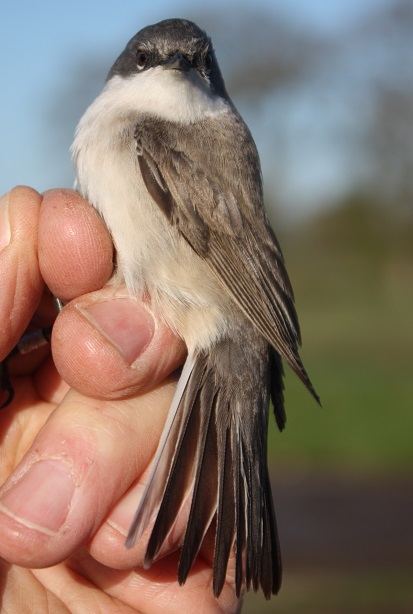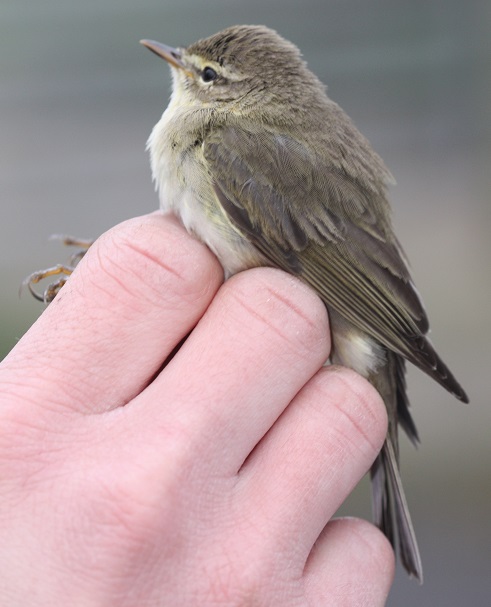Blakehill Farm, Saturday, 23rd April 2016
With the central plateau at Blakehill being out of bounds now, until after the hay is cut in July and the breeding season is over, Fraser and I decided to have an experimental session in the fields beyond the new ponds. With the wind forecast to come from the north, we set the nets on the south side of a couple of hedgerows. The downside was that we could not set them close to the hedge, because it was fenced off a good metre away from the edge of the blackthorn. It certainly had a bit of an impact, with plenty of bird movement along the hedge, particularly Linnets, that missed the nets. That is not to say that it put any sort of damper on the session: we caught some nice birds and had an excellent spell of birding in the intervals and after we had packed away the nets.
The catch comprised: Blue Tit 3(1); Wren 2; Song Thrush 1; Blackbird 2; Lesser Whitethroat 2; Chiffchaff 3, Willow Warbler 1. Totals: 14 ringed from 7 species and 1 retrap.
The ringing highlight of the day were the two Lesser Whitethroat caught and ringed: my first of 2016.


Ironically, one of the main birding highlights was a Curlew. It flew into the field where we had set up and landed about 40m away from one of our net sets. They are, of course, a key breeding species for Blakehill and a major reason for us not ringing out on the central plateau for the next 3 months. Our next highlight was a stunning male Whinchat. This was seen in the first bushes west of the perimeter track from the Chelworth side of the reserve. I had taken Fraser round to show him where else we ring on the site. Walking up to the gate we saw an upright chat-like bird on the top of the bush. It kept flying out from its perch and returning to the same spot. When I got the binoculars on it, it was a stunning male Whinchat. About 2m to its left, in the same bush, was a male Stonechat. Nice to see them both together, to get a clear perspective on the differences.
We had several Swallow flying around the fields and, although we didn't see them, both Whitethroat and Redstart were heard singing in the bushes. ST / FB


